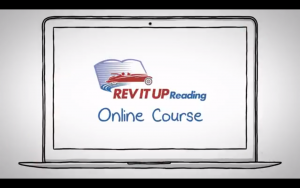Reading is one of the most fundamental skills, and reading for pleasure can transform your health, memory, and productivity. In our age of information overload, however, it can feel like there isn’t enough time in the day to get through all of your Slack messages, emails, and project reports, not to mention all the articles you intend to read. The sheer amount of documents and other communication many of us need to read at work each day can seem like a daunting task–but there are ways to get through everything you need to read at work faster.
Yes, speed reading. Though the technique is traditionally thought of as a way to get through book-length tomes, Abby Marks Beale, a speed-reading expert and author, says that the active reading strategies used in speed reading works on all kinds of texts. While speed reading to those that have never done it might seem like some kind of magic trick, Beale says in actuality, all it is “a set of active, mindful, and conscious strategies that allow a person to intentionally speed up or slow down [what they are reading] based on certain conditions.”
And these active reading strategies can be learned by anyone, and once mastered, the reader typically learns “how to double to triple their current reading speed while maintaining or improving their comprehension. This means they could read twice or three times as much in the same amount of time when they choose to read using faster strategies.”
Here’s how to start:
SET YOURSELF UP FOR CONCENTRATION SUCCESS
Before you even read a word of text, Beale says its critical to “create a concentrating environment.” This is an environment where we are free from distractions. This allows our brain to mono-focus on just one stimulus and absorb the information more quickly and readily. Of course, while it may be easy to create a concentrating environment if you have your own office, those who work in open workplaces might have some trouble shutting distractions out. That’s not to say speed reading can’t be done in an open workplace, you may just need to have some extra help blocking people out, like a pair of good noise-canceling headphones.
READ PHYSICAL MEDIA WITH A WHITE INDEX CARD
If you’ve ever spent time in a library doing research among other researchers, you’ll have no doubt noticed at one point that as a researcher read a book, she used a white index card placed directly under the sentence she was reading. Using a white index card is one of the first steps people can take towards becoming a speed reader, says Beale. “The method helps your eyes track more fluidly across the lines, helps you keep your place and forces concentration. Faster speed forces more concentration, which provides the opportunity for more comprehension.” However, she cautions that most people place the white index card in the wrong spot.
“When I ask readers where they would like to put the card on a page, most people say underneath the line they are reading. This, however, allows the reader to go back over what they just read, doubting the brain (we call this bad habit “regression”), while blocking where the eyes need to be going,” says Beale. “So in order use a white card to your advantage, the card needs to be placed ABOVE or OVER the line you are reading so you don’t see the lines you already read and you leave open the lines you haven’t. The card then pushes the eyes down the page.”
ADAPT THE WHITE INDEX CARD TRICK TO ON-SCREEN TEXT
While the white card works great for printed text, such as books and project briefs, it’s not practical for screen reading. Holding up a physical index card to your monitor while reading lengthy emails, PDFs, and web pages would get tired very quickly thanks to gorilla arm syndrome. And you would just look silly. But Beal says it’s easy to adapt the white card trick to on-screen text:
“To adapt this to a screen, line up the first line of text to the top of the screen where an application’s toolbar or upper window border might be,” says Beale. “Then using the scroll bar on the right, advance down one line at a time, which forces the words up as if covered by a white card.”
If you use only one speed reading trick, make it this. That’s because, as Beale points out, “Reading text on-screen, without any strategies, is about 25% slower than reading on paper,” so you’re already at a disadvantage if most of your workplace reading is done on-screen.
STOP “WORD-FOR-WORD” READING
Now that you’ve set up an environment conducive to concentrating and have learned how to force your concentration on the line you’re reading using either variation of the index card trick, the last big beginners’ speed reading trick you need to master is the ability to use your peripheral vision to take in more than one word at a time. “People who ‘speed read’ have learned how to not decode every single word (also known as word-for-word reading) and instead read more words at a glance,” explains Beale, who gives the following example of the method:
The best way to achieve this is to read key words and/or phrases. Key words are the bigger, more important words in a sentence, just like the headlines of a newspaper provide the essence of the content. Learning to stop your eyes on the words that are typically three letters in length or longer and those which carry the most meaning of a sentence are key words.
“Now go back and reread just the words in bold,” Beale says. “The smaller, less important words are “seen” but not “read,” which starts the process for expanding your peripheral vision.” Additionally, another variation of this trick is to look for groups of words in a sentence that form a thought, as in this example:
Additionally/ sentences contain groups of words/ that form a thought./ Looking for these thought groups/ encourages a wider visual swath/ while gaining higher understanding/ of the material.
Read the above text ignoring the slash mark groupings first, then go back and see the groupings created between the slash marks. “Both of these methods are active reading methods requiring the reader to really focus on what they are reading and how their eyes move on a page,” Beale explains.
At first, learning to speed read may make you feel like you’re actually reading slower, but over time you’ll pick up the techniques as second nature. And just maybe if you learn to speed read through your work texts, you may gain just enough new free time in the day to settle down with a nice leisurely book in the evening.


 ENTER NOW
ENTER NOW